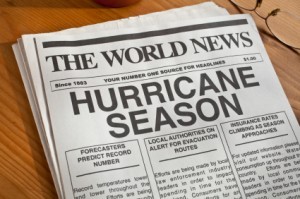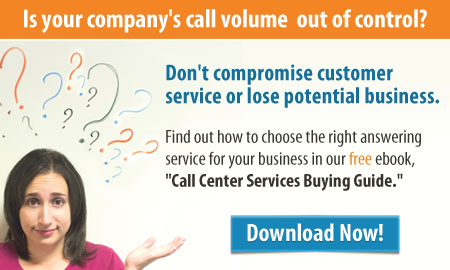Hurricane Sandy has been a cautionary tale.
 It has highlighted the importance of contingency planning for your telephone calls. You were probably already thinking about how to handle the holidays. Now, the need for disaster preparedness has been brought to the forefront.
It has highlighted the importance of contingency planning for your telephone calls. You were probably already thinking about how to handle the holidays. Now, the need for disaster preparedness has been brought to the forefront.
Emergency Situations
An on-call answering service can help you prepare for a number of scenarios.
- Unusually heavy telephone traffic.
- A shortage of employees to handle traffic (ex. a holiday, a heavy marketing campaign, a weather event that keeps them from coming into work, etc.).
- Loss of power or phone service.
- A facility that is so damaged that work cannot continue from the site.

Call Routing
The first thing to think about is routing. Here are two ways to point traffic to an on-call answering service:
1) Phone System: You can use your own phone system to forward calls if it has the capability of routing traffic outside of the system to another telephone number. This will no longer work if you lose power or phone service. You will need to contact your phone company (from your cell or another location) and ask them to Remote Forward your calls to your answering service. When your emergency is over, you will need to contact your carrier again to remove the forwarding.
2) Phone Company: You can use your phone company’s forwarding features. There are three.
- Manual Call Forwarding: Which you can activate manually at will.
- Call Forward No Answer: Automatically forwards calls after a designated number of rings.
- Call Forward Busy: Automatically forwards calls if all of your lines are full.
The last two features are automatic and programed in at your phone carriers central station. They will continue to work even if you lose power or phone service. I have seen situations where the first feature, Manual Call Forwarding, has been dropped due to a power surge. It is wise to have the Call Forward No Answer feature as well as a back-up. For a more detailed explanation of these three features see our blog on Call Routing Features.
Emergency Instructions
The second issue is emergency instructions. If your on-call answering service has to take your traffic during hours they don’t normally receive them, they will need different instructions. It may be important for them to identify urgent situations and what can wait.
There can also be information delivery issues. How will they reach your employees? During disasters cell phone reception may be spotty or non-existent. The same holds true for texting and e-mailing. Your answering service must be flexible and able to change instructions on the fly as your situation changes.
Planning Ahead
Of course, the best tactic is to plan in advance. Chose a quality answering service, set up emergency procedures, test them and keep them updated.
You can help people affected by disasters like Superstorm Sandy
by making a donation to support American Red Cross Disaster Relief.
Just click on the logo below for the official American Red Cross website.
This blog was written by Laurie Leonard, the President of SUITE 1000, a U.S. based national telephone answering service, inbound call center and outsourced call center service. Her company has specialized in handling legal intake, sales leads, email lead response, appointment scheduling, customer service and help desk calls for over 20 years.
Copyright © 2025 SUITE 1000. All rights reserved.


